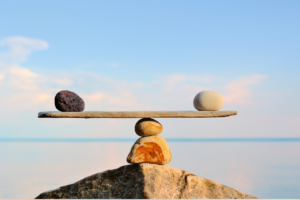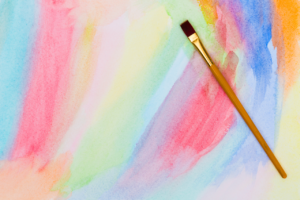Natural Tips for PMS and Period Cramps
It’s a Wednesday morning during a normal work or school week. You roll out of bed more tired than normal, put the coffee pot on, and start getting ready. As you get dressed, you notice you have a slight headache, your pants feel tighter than yesterday, and your breasts are a little tender as you snap your bra on. As you rush to get out of the house, you knock your coffee cup on the counter, and it spills everywhere. Suddenly, you feel the anger building up. Maybe you start crying. Maybe you laugh and cry at the same time.
As you sit there and wonder what’s going on with you today, your phone lights up with a notification from your health app that says, “Your period is expected to start in 3 days.” A lightbulb goes off in your head and you take a big sigh, because now it all makes sense.
We’ve all been there. The infamous question of “Are you getting your period? You are acting so moody today” is something we’ve all experienced. However, I detest that television and media have used our periods to undermine our experiences. As though just because we’re going through a hormone shift, our emotions are suddenly unwarranted.
The reality is that premenstrual syndrome (PMS) is a real and valid struggle that many women deal with monthly. For some women, it is debilitating. For others, they experience symptoms for two full weeks out of every month. Premenstrual dysphoric disorder (PMDD) is also possible – a condition where mood changes like anxiety and depression are even more prominent symptoms in the premenstrual period and can significantly affect daily life. PMS and PMDD should be treated with as much importance as any other symptom or condition we may experience throughout our lifetime.
Common symptoms of PMS include bloating, breast tenderness, breast swelling, food cravings, appetite changes, constipation or diarrhea, mood swings, irritability, anxiety, depressed mood, headaches, migraines, muscle tension, joint pain, acne, changes in sleep, and fatigue.
On the bright side, PMS and period cramps are treatable and manageable with natural therapeutics. It is always important to get to the root cause of your symptoms, but here are my top tips of natural things for PMS and cramps.
Nutrition
Food is medicine. Incorporating higher amounts of the following foods can (over time) help correct hormonal and nutritional imbalances, reduce PMS, and reduce period pain.1
- Brassica vegetables such as broccoli, cauliflower, Brussels sprouts, and kale. These vegetables contain compounds that help the liver metabolize excess hormones.3
- Seeds such as sunflower seeds, flax seeds, sesame seeds, and pumpkin seeds. Seed cycling, which is the practice of eating certain seeds during different times of the month, can help move your body into the proper rhythm of hormone production.
- Salmon and other fatty fish (I prefer organic wild-caught salmon for medicinal purposes). Salmon has a significant amount of omega-3 fatty acids, which is extremely anti-inflammatory and can help reduce symptoms over time.
Lifestyle
Because our periods come on a monthly cycle, it is important to create habits throughout the month and to have tools to use when the actual time comes to help with symptoms.
- Topical castor oil over the liver. Ricinus communis (the castor plant) seeds produce an oil that is anti-inflammatory and particularly helpful for liver metabolism of hormones.1
- Epsom salt baths. Epsom salt is composed of magnesium salt. Magnesium is what we call a “smooth muscle relaxer” and can help reduce tension, headaches, uterine cramps, and improve mood. Magnesium is also a common nutrient that is depleted with oral birth control, which can contribute to symptoms.
Herbs
Herbs can be amazing for both balancing our hormones and improving liver function, which treats the root cause, and for symptom management. Of course, talk to your doctor before implementing any health changes but here are some of my favorites –
- Black Cohosh (Actaea racemosa): this hormone modulating herb will help get your hormones back on track, in balance, and functioning like they are meant to. It is also a relaxing herb and reduces smooth muscle contraction for cramp prevention.1
- Lemon verbena (Verbena officinalis): this bitter herb is not only good for the liver and hormone metabolism, but it is particularly good for releasing muscle tension and stress that comes with PMS.2
- Ginger (Zingiber officinalis): this spicy yet healing herb can help reduce cramps, gastrointestinal distress during your period, and reduce the overall inflammation that can contribute to symptoms.1
- Crampbark (Viburnum opulus): this herb is named exactly for its job – it’s a bark that reduces cramps by reducing muscle contraction. It is indicated when cramps are mild to moderate in severity and works best in conjunction with other herbs.1
Wouldn’t it be great if the PMS “alarm system” was put on low volume and the only sign of getting your period was actually getting your period? The good news is that it is possible to get your period back on track and feel like yourself all month long. Hopefully, one day, you’ll look at those PMS commercials and sigh with relief that your PMS is something of the past.
- Hudson T. Women’s Encyclopedia of Natural Medicine. McGraw Hill; 2008.
- Khan AW, Khan AU, Ahmed T. Anticonvulsant, Anxiolytic, and Sedative Activities of Verbena officinalis. Front Pharmacol. 2016;7:499. Published 2016 Dec 21. doi:10.3389/fphar.2016.00499
- Yan L, Yan Y. Therapeutic potential of sulforaphane in liver diseases: a review. Front Pharmacol. 2023;14:1256029. Published 2023 Aug 29. doi:10.3389/fphar.2023.1256029
 Previous Post
Previous Post Next Post
Next Post


Great blog! Your natural tips for managing PMS and period cramps are incredibly helpful and practical. I especially appreciate the emphasis on holistic approaches. It’s refreshing to see such thoughtful advice for improving menstrual health. Thanks for sharing!